The Opensource.com community is full of people with varied interests; all brought together by their love of open source. The 2020 Opensource.com summer reading list reflects those diverse interests by covering books about a wide range of subjects and for different age groups. Books about mathematics, cryptography, Unix, and "coding" a sandcastle are just a few of the selections that comprise this year's list.
This year's summer reading list also provides a great representation of the ever-growing and changing nature of Opensource.com. Contributors range from people who have worked on this site for many years to some of the newest correspondents. Over the years, old friends have moved on to different experiences and new faces have joined the community, but the commitment to open source has remained a constant bond of camaraderie.
My own journey with Opensource.com began with a contribution to the 2013 summer reading list and has now grown to 100 articles. I have learned a lot from all of my Opensource.com colleagues during that time, and I hope you will also learn a lot from the wisdom some of them have shared in their book reviews.
Enjoy!
The Age of Surveillance Capitalism
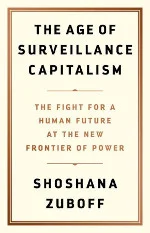
by Shoshana Zuboff (recommendation written by Scott Nesbitt)
These days, big tech firms seem to know more about you than you know about yourself. They know about everything that you've read, seen, or clicked online. They know what you've bought, who you've chatted with, and with whom you're connected. At any given moment, they seem to know where you are and what you're doing. Worse still, those companies have turned collecting, using, and selling your information into a highly lucrative business model.
In The Age of Surveillance Capitalism, Shoshana Zuboff combines scholarly rigor with journalistic detail to explore how that came about. She examines the ways companies large and small have melded the seemingly disparate disciplines of advertising, behavioral science, data science, and user experience design to know what you want and will want, to show you what they want you to see, and to influence what you think and what you believe. As Zuboff shows, what started as clever ways to keep the attention of users rapidly morphed into data-driven machines that earn companies fortunes while offering only dubious benefits to the people providing the data.
It's not all gloom and doom, though. Zuboff also devotes more than a few words to discussing how you can try to counter the tech giants and take back control of your data and of your online life. She concedes doing that won't be easy, but the consequences of not acting are worse than trying and maybe failing.
The Age of Surveillance Capitalism isn't a light read that you can breeze through in an afternoon. It's a thick, detailed, and sometimes dense tome—the trade paperback edition weighs in at 691 pages of small type. The book requires your attention and concentration. But that effort is worth expending. The Age of Surveillance Capitalism is never boring, often chilling, and an always enlightening look at the digital world in which we live.
The Basic Laws of Human Stupidity
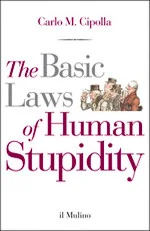
by Carlo M. Cipolla (recommendation written by Cristiano L. Fontana)
I would suggest reading The Basic Laws of Human Stupidity by Carlo M. Cipolla, which is a nifty essay that defines human stupidity. It is a very short, ironic book presented as a serious academic publication. This essay introduces the laws of human stupidity, with plots and corollaries, in a very straightforward and effective style. If a reader is looking for a diversion from fiction and serious non-fiction books, this little bijou is a good option. Often, though, the irony is based on profound reflections; thus, there is much more to this book than the stated laws.
The Code Book: The Science of Secrecy from Ancient Egypt to Quantum Cryptography
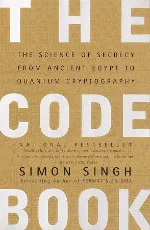
by Simon Singh (recommendation written by Seth Kenlon)
Learning the basics of encryption is hard work, but Simon Singh manages to take you from the start of formalized encryption (the famous Caesar cipher, also called ROT for rotation) to the infamous Enigma machine of World War II and beyond. Simon skillfully weaves the technical specifications of encryption in with the historical context that gave birth to important improvements in the field. The history lesson is fun and a nice mental break between encryption exercises, but the real appeal here is the way Singh demonstrates the process of encryption and decryption of plain text, and—possibly most important—cracking ciphers.
Essentialism
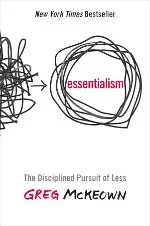
by Greg McKeown (recommendation written by Jen Wike Huger)
Reading this book was one big affirmation for living a life trying to reduce, reabsorb, and reject some of the stuff thrown at me every day under the influence of the common practices of our consumerism society. Whether it be verbal or physical, the stuff coming at us every hour, every day, can lead to confusion about where to go, who to see, what to do… and who to be.
Part of what I love about my job on the editorial team at Opensource.com is the focus on just open source. And how open source is such a basic concept: open up the code (or data or hardware or…) and let others have access to it. Maybe they'll use it; maybe they'll even contribute to it. Whatever happens next, it will likely be complex. Sometimes beautiful and engaging and just what the world needs to tackle a problem. Sometimes strange and confusing and just another thing to add to the stuff pile.
As an editor, I have the tough job, yet the privilege, of discerning what to cover and share with readers on the site. When it comes to this and so many other things in life, the question becomes: How does one do that? How do you discern what is quality… or essential?
My answer is a fundamental understanding of how to see it, and then practice, practice, practice.
In this book, McKeown explains the how to see it part. He gives the selective criteria you'll need, and then it's your job to apply it to, well, every part of your life. Sound hard? I don't think so. Once you understand the how from reading this book and start to practice it, one day, you'll look up, and the doing has become easy. Natural, even.
A quick look at all 19 chapters:
- Choose: The invincible power of choice
- Discern: The unimportance of practically everything
- Trade-off: Which problem do I want?
- Escape: The perks of being unavailable
- Look: See what really matters
- Play: Embrace the wisdom of your inner child
- Sleep: Protect the asset
- Select: The power of extreme criteria
- Clarify: One decision that makes a thousand
- Dare: The power of a graceful "no"
- Uncommit: Win big by cutting your losses
- Edit: The invisible art
- Limit: The freedom of setting boundaries
- Buffer: The unfair advantage
- Subtract: Bring forth more by removing obstacles
- Progress: The power of small wins
- Flow: The genius of routine
- Focus: What's important now?
- Be: The essentialist life
Exhalation

by Ted Chiang (recommendation written by Matt Broberg)
Exhalation is a vibrant series of short stories inspired by science, philosophy, and human experience. Each story is so immersive; each transports me to its curious world with deep themes: time-traveling in ancient Egypt while obeying Einstein's theory of relativity, sentient software pets, archaeology, and quantum mechanics. The topics are never just highbrow: they blend cultural and historical contexts with research and tell stories so beautiful its hard to stop reading.
What I also appreciate about Exhalation is that it remains hopeful throughout its exploration of advancements in technology. Ted Chiang takes an honest look at how invention changes the human experience. He laments the loss of past culture, like the time before the written word, and embraces the different and possibly improved future. That's courageous in a time of fearful stories that only focus on the worst-case scenarios.
If you enjoy science fiction and short stories, Exhalation by Ted Chiang will be a joy.
Greenglass House
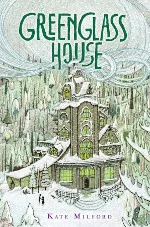
by Kate Milford (recommendation written by Dawn Parzych and her son)
Review from Dawn: Greenglass House is a mystery that takes place at an inn a few days before Christmas. The story centers around a number of guests that unexpectedly show up, ruining Milo's hope for a quiet Christmas with his parents. These guests are all hiding something, and then things start disappearing. Milo heads out on a quest to figure out what is going on.
An added bonus from my perspective: early on, we learn that Milo was adopted. Given that our family was formed via adoption, this was a great conversation starter. The book did a great job of talking about adoption from the perspective of a child. This is an overall great mystery story, and for those looking for a young adult book with positive adoption themes, I strongly suggest Greenglass House.
Review from Junior, age 11: If you're into mysteries, spookiness, and comedy, Greenglass House is for you. Greenglass House is about a boy named Milo. Thirteen-year-old Milo only wanted to spend Christmas break with his family, but when you live in a hotel, anything can happen. When more guests arrive, Milo doesn't seem too happy. But over time, you get used to it. When people start telling stories about the house, it all adds up. When things get stolen, the story flips. Mysteries happen all through the house like stolen items, strange friends, love stories, weird house history, and one person who breaks it all down. We all know storytelling is a great way to make friends, but it can also destroy people. Want to learn more? Well, too bad. Now go read Greenglass House or don't. It's up to you.
How to Code a Sandcastle
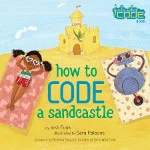
by Josh Funk and illustrated by Sara Palacios (recommendation written by Lauren Pritchett)
How to Code a Sandcastle is brought to us by Girls Who Code, a non-profit organization working to close the gender gap in computer science. One way they aim to do that is by introducing girls to computer science at a young age. What better way to start than with this delightful children's book! Reshma Saujani, the founder of Girls Who Code, writes in the book's foreword that computer science should be taught to kids, just like other key subjects.
This book was a gift for my daughter on her third birthday. She was immediately drawn to the story because it takes place at one of her favorite places: the beach. The main character, aptly named Pearl, has been spending all summer trying to build a sandcastle but keeps getting interrupted by external forces (dogs, frisbees, etc.). Finally, she teams up with her robot, Pascal (also aptly named), to get the job done. Pearl explains to the reader how she will teach her robot to do the work for her by writing code. Everything seems to go according to plan, and her loops are working like a charm. But then, true to the life of a computer programmer, a problem arises! Pearl taps into her past experience to brainstorm a solution. Any kid can picture themselves in Josh Funk's relatable story.
My daughter is five years old and still adores this book. She loves finding patterns in everyday life, and we often refer to this book in our conversations.
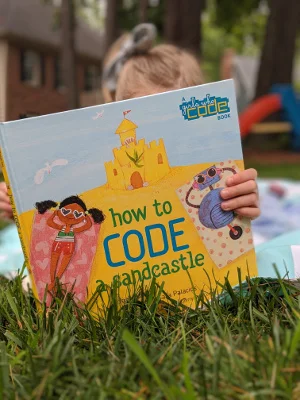
Humble Pi: When Math Goes Wrong in the Real World
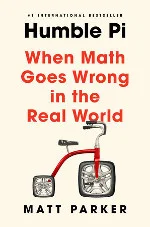
by Matt Parker (recommendation written by Joshua Allen Holm)
Math is an academic subject that some people just loathe. Math is hard. Math is not fun. Matt Parker, author of Humble Pi: When Math Goes Wrong in the World, is most certainly not of that opinion. Parker shows that math is fun, even when he is sharing anecdotes about all the times math errors have had real-world consequences.
In Humble Pi, Parker shares times people and computers have completely bungled the math. From big oops to silly little errors, Humble Pi recounts story after story of math errors. He even includes one of my favorite computer bugs: war-mongering, nuke-happy Gandhi in the Civilization series of computer games. Parker explains that particular bug in chapter six, providing a detailed explanation of not just what went wrong, but why it went wrong. The explanations of why things went wrong provide excellent insight and allow the reader to learn from the mistakes other people have made.
Beyond the valuable lessons provided by the book, Humble Pi has plenty of mathematical humor to entertain the reader. For example, the book is 4,294,967,286 pages long because the page numbering starts at 314 and counts down. After the page number reaches zero, the count does not go to -1, but instead, it rolls over to 4,294,967,295 because the page count is being treated as if it were an unsigned integer value.
Humble Pi is a book about math written by a math nerd for math nerds, but it is approachable by anyone. Parker's writing is engaging and extremely entertaining. He is the math teacher many people probably wished they had when they were in high school; he is passionate and makes the subject fun, even when he is focusing on the many, many times we silly humans managed to get the math wrong.
To get a preview of some of the math errors that Matt Parker covers in Humble Pi, watch his lecture to the Royal Institution, What happens when maths go wrong?
People Powered

by Jono Bacon (recommendation written by Jeff Mackanic)
This is a fantastic book written by one of the all-time great community leaders, Jono Bacon.
One quote says it all:
"Communities need to be fun!"
Here are a few more snippets to get you excited to read this wonderful book:
"People are initially attracted to communities for the tangible value, but the intangible value keeps them coming back for more."
"If you ask them to help, they often will."
"The quieter ones are often your secret weapons. The key here is to engage them one-on-one."
"Require civility, not agreement to everything you do."
"You didn't buy this book to do just OK. You bought this book to kick ass."
Go buy the book; it is amazing.
Sandworm: A New Era of Cyberwar and the Hunt for the Kremlin's Most Dangerous Hackers
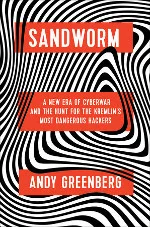
by Andy Greenberg (recommendation written by Gaurav Kamathe)
One thing that the year 2020 has taught us is that viruses have become a way of life; be it the coronavirus wreaking havoc on humans worldwide or computer viruses wreaking havoc on computers and other computer-controlled equipment.
While the precise origins of the coronavirus are still not fully understood, we know for certain that computer viruses are malicious, manmade creations. Computer viruses have come a long way from harmless pranks and are now being used to cause damage and chaos like power shutdowns, ATMs running dry, and nuclear plant failures.
As humans, we have eagerly tracked the spread of the biological virus and how it brought an entire planet to a standstill. We have also heard stories of the medical staff bravely fighting this contagion. Aren't you a little curious about the spread of the computer viruses and their casualties? Not to mention the very people creating them and others fighting them on the digital frontiers?
We practiced social distancing to tackle the spread of COVID-19, yet our computers are always connected to the internet. Can we afford to distance them from the internet yet stay connected?
In Sandworm: A New Era of Cyberwar and the Hunt for the Kremlin's Most Dangerous Hackers, Andy Greenberg tracks a group of hackers who create computer viruses with the intention of wreaking havoc on a country and ultimately the world. It sheds some light on important events and individuals who are part of a group known as Sandworm and the people fighting their creations in real time.
Switch: How to Change Things When Change is Hard

by Chip Heath & Dan Heath (recommendation written by Bryan Behrenshausen)
Building and managing an open source community (or any open organization, for that matter) is largely an exercise in analyzing, understanding, and channeling energies. Successful community architects are experts in organizing seemingly disparate, cross-cutting actions into buzzing hives of mutually reinforcing behaviors oriented around shared goals—all without recourse to command-and-control structures or conventional, formal authority. In short: They're great at tapping into participants' intrinsic motivators to jostle, nudge, and cajole them gently in new, productive directions.
That's why Chip and Dan Heath's Switch is such valuable reading for anyone managing an open source community; it offers a concise but detailed formula for activating desirable behaviors in individuals and groups. That formula is straightforward enough: to catalyze change, speak to the rational mind, speak to the emotional gut, and tailor the environment to encourage the actions you'd like to see others pursue. Easy, right? Not really. Thankfully, the book's accounts of psychological experiments and high-profile switches gone well help readers understand why getting people to do things you can't command them to do is so tricky. Any community facing the daunting prospect of change this summer will want to start here.
Unix: A History and a Memoir
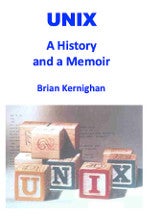
by Brian Kernighan (recommendation written by Jim Hall)
If you're a Unix and Linux fan, I think you'll enjoy Unix: A History and a Memoir by Brian Kernighan.
If you don't immediately recognize the name Kernighan, you will find it attached to notable books on computer science, including The Unix Programming Environment (with Rob Pike) and The Elements of Programming (with P.J. Plauger). Kernighan is also a pretty big name on his own; he is the K in AWK (with Al Aho and Peter Weinberger) and co-wrote the seminal The C Programming Language book (with Dennis Ritchie).
Kernighan's book Unix: A History and a Memoir is well-titled. He shares details on the rich history of Unix, including background on Bell Labs, the spark of Unix with CTSS and Multics in 1969, and the first edition in 1971. Kernighan also provides his own reflection on how Unix came to be such a dominant platform, including notes on portability, Unix tools, the Unix Wars, and Unix descendants such as Minix, Linux, and Plan9.
You will also find nuggets of great stories that fill in details and provide stories around some of the everyday features of Unix.
For example, Kernighan discusses Stu Feldman's original make. Kernighan writes on page 96:
"Remembering which files had been compiled recently enough … was a nuisance, however, and it was easy to make mistakes. Steve Johnson complained about this to Stu Feldman one day, after spending hours of fruitless debugging, only to realize he had failed to recompile one of the files he had changed. [In response, Stu] wrote Make over the weekend, and then rewrote it the next weekend with macros … [Stu] didn't fix the tab-in-column-1 because [he] quickly had a devoted user base of more than a dozen people and didn't want to upset them."
If you have ever written a makefile and wondered about starting each line with a tab, now you know.
My favorite story is about a young graduate student, Bill Joy, who often visited Bell Labs:
"I remember one evening when he showed me the new text editor he was working on. … Bill's editor used cursor addressing to update the screen as text was being edited. This was a major change from the line-at-a-time model [from the
ededitor]. … I don't recall what I said at the time about the editor itself, but I do remember telling Bill that he should stop fooling around with editors and finish his PhD."
Bill Joy later dropped out of graduate school and co-founded Sun Microsystems. And Bill's nifty editor? That was the now-ubiquitous vi. On page 136, Kernighan comments, "I often cite this story when students ask me for career advice—older is not always wiser."
Definitely add this book to your summer reading list.
If you cannot find anything that interests you on this year's list, check out our previous lists for more reading suggestions:
- 2019 Opensource.com summer reading list
- 2018 Open Organization summer reading list
- 2016 Opensource.com summer reading list
- 2015 Opensource.com summer reading list
- 2014 Opensource.com summer reading list
- 2013 Opensource.com summer reading list
- 2012 Opensource.com summer reading list
- 2011 Opensource.com summer reading list
- 2010 Opensource.com summer reading list




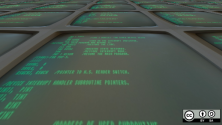

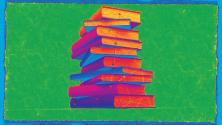

1 Comment